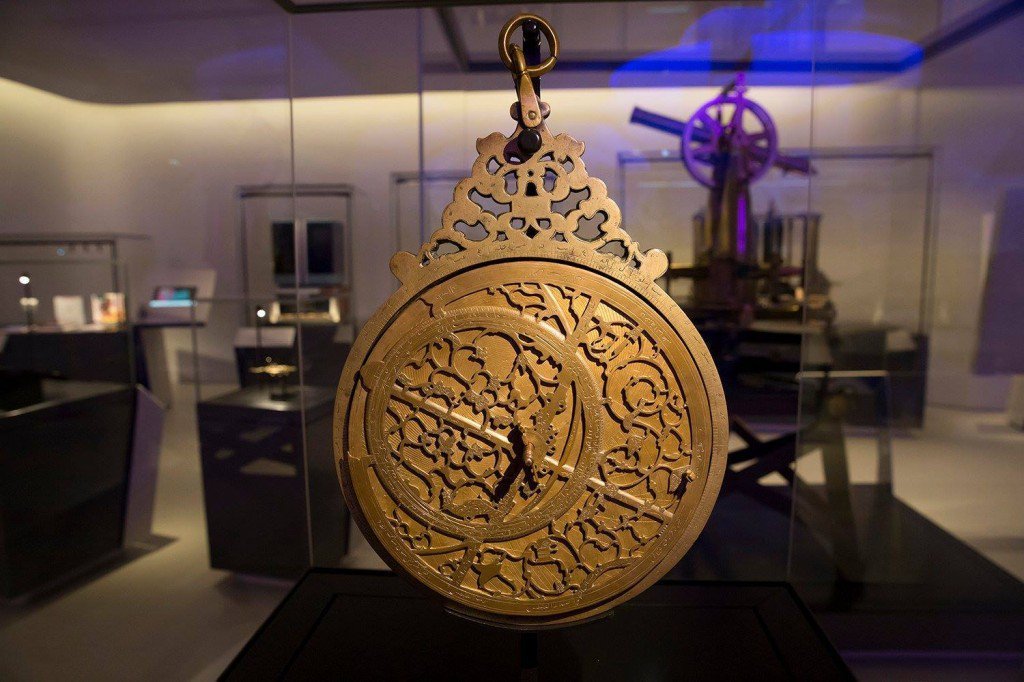Achievements
What were al-Battani’s main achievements in Kitab Al-Zij? He catalogued 489 stars, refined the existing values for the solar year’s length (as 365 days, 5 hours, 48 minutes and 24 seconds), calculated 54.5″ per year for the precession of the equinoxes, and obtained the value of 23.35′ for the inclination of the ecliptic.
Rather than using geometrical methods, as Ptolemy had done, al-Battani used trigonometrical methods, constituting an important advance. For example, he provided important trigonometric formulas for right-angled triangles such as: b sin(A) = a sin(90-A).
Al-Battani showed that the farthest distance of the Sun from the Earth varies and, as a result, annular eclipses of the Sun are possible as well as total eclipses.
However, Ptolemy’s influence on all medieval authors was remarkably strong so that even a brilliant scientist like Al-Battani probably did not dare claim a different value of the distance from the Earth to the Sun than that given by Ptolemy. This occurred despite the fact that Al-Battani was able to deduce a value from his own observations that differed greatly from Ptolemy’s.

Copernicus mentioned his indebtedness to the illustrious Muslim astronomer, Al-Battani, and quoted him in the De Revolutionibus (1543).
Discoveries & Science
Particularly in the Middle Ages, Al-Battani’s original discoveries in both Astronomy and Trigonometry were of great consequence to the development of the sciences.
He had substantial influence on scientists such as Tyco Brahe, Kepler, Galileo and Copernicus, managing to produce more accurate measurements of the motion of the sun than did Copernicus who expressed his indebtedness to Al-Battani in his book De Revolutionibus Orbium Clestium.
Beer and Madler, in their famous work Der Mond (1837), refer to one of the surface features of the moon (a plain eighty miles in diameter in Section One that is surrounded by mountains ten to fourteen thousand feet high, several craters, and several saucer-shaped pits) as Albategnius.
The printed edition of Al-Battani’s Kitab al-Zij was translated into Latin as De Motu Stellarum (On The Motion Of The Stars) by Plato of Tivoli in 1116, and appeared in 1537 and again in 1645. A Spanish translation was made in the 13th century; both it and Plato of Tivoli’s Latin translation have survived.
Al-Battani’s greatest fame came in Mathematics, with the use of trigonometric ratios as we use them today. He was the first to replace the use of Greek chords by sines, with a clear understanding of their superiority. He also developed the concept of cotangents, and furnished their tables in degrees.
According to tradition, Al-Battani died while en route to Baghdad to protest on behalf of a group of people from Ar-Raqqa who had been unfairly taxed. His memory remains strong today in the field of Islamic scientific history; he is even mentioned on modern television shows.
Al-Battani’s reputation as a premier astronomer has even worked its way into Star Trek lore. According to Star Fleet records, the first posting of newly graduated Ensign Kathryn Janeway was the USS Al-Battani. During her assignment, Janeway once knocked out power to six of its decks by misaligning positronic relays. She would survive this embarrassing mishap, however, and rise to the rank of Captain and Commander of the USS Voyager.
This article is from our archive, originally published on an earlier date.
Pages: 1 2

